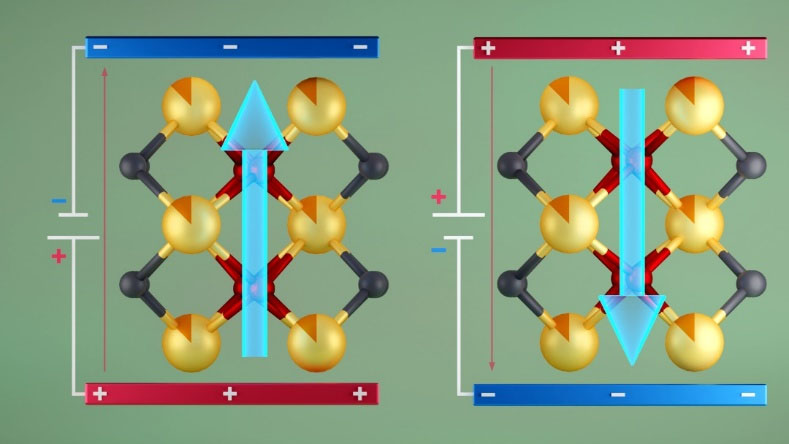| Jun 22, 2022 |
Innovative ferroelectric material could enable next-generation memory devices
(Nanowerk News) Ferroelectric materials are substances with spontaneous electrical polarization. Polarization refers to the separation of the negative and positive charges within a material. For ferroelectric materials, this means the “memory” of the material’s prior state (referred to as hysteresis) can store information in a way similar to magnetic storage devices such as hard disks.
|
|
Ferroelectric materials based on the element hafnium show promise because they are more compatible with today’s silicon computer circuits than other potential materials. In the past, researchers achieved ferroelectricity on ultrathin films. These films can be delicate and hard to use.
|
|
Scientists have now reported the first experimental evidence of room-temperature ferroelectricity in crystals made of a hafnium-based compound, bulk yttrium doped hafnium dioxide (Nature Materials, "Kinetically stabilized ferroelectricity in bulk single-crystalline HfO2:Y").
|
 |
| The structure of yttrium (partially shaded orange) doped hafnia dioxide crystals exhibits ferroelectric polarization (blue arrows) that changes direction as the external electric field is reversed. (Image": Oak Ridge National Laboratory)
|
|
Hafnia-based ferroelectric materials have many benefits for computer memory. They offer high speed, durability, lower operating power, and the ability to retain data when power is turned off. However, researchers do not fully understand these materials. This research developed an innovative bulk hafnia-based ferroelectric material.
|
|
The results provide insights into how these materials behave and how to control them. The results also remove the materials’ upper size limit, making such materials easier to use in real-world applications.
|
|
The large sample size will aid further experiments to better understand the material’s ferroelectric properties. This in turn will help researchers create next-generation non-volatile memory devices.
|
|
Intel co-founder Gordon Moore postulated in 1965 that the number of transistors on a computer chip would double every two years, a prediction known as the Moore’s Law. Chip manufacturers since have been able to maintain this rate of miniaturization but face increasing challenges due to the laws of physics.
|
|
Hafnia-based ferroelectric materials may help to further miniaturize non-volatile memory devices, but researchers have not developed a bulk form of the material. The new bulk ferroelectric yttrium doped hafnium dioxide developed in this research could enable such development, leading to more use of hafnia on computer chips and extending Moore’s Law.
|
|
A team of researchers led by Rutgers University performed neutron powder diffraction measurements on yttrium doped hafnium dioxide using the POWGEN, a general-purpose powder diffractometer instrument at the Spallation Neutron Source, a Department of Energy (DOE) user facility at Oak Ridge National Laboratory (ORNL).
|
|
POWGEN is a high-resolution neutron powder diffractometer that enables characterizing the crystal, magnetic, and local structures of novel polycrystalline materials. The team synthesized single crystals of yttrium doped hafnium dioxide at various yttrium doping levels and ground them into powder for characterization.
|
|
POWGEN data showed that at certain doping levels, the bulk phases were stable and the oxygen atoms shifted to enable reversible polarization, thus confirming the hafnia’s ferroelectricity at room temperatures. Other measurements, including polarization-electric field hysteresis loop and computational simulations, supported the structural analyses, representing an important step forward towards future hafnia-based technologies.
|

